Updated: 01-Mar-2021
The complete name is “ABC Motors Eng. Co. Ltd.” founded in 1911 as the successor of ABEC “All British Engine Company” that was situated in Walton-on-Thames in Hersham, Surrey.
-Known engines were the “Gadfly”, “Gnat”, “Scorpion”, “Wasp”, “Hornet”, “Mosquito” and especially the “Dragonfly”.
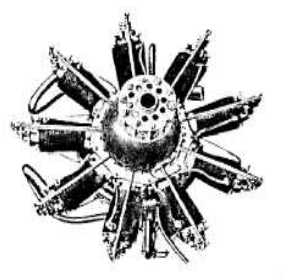
“ABC Dragonfly”
-They were designed by G. Bradshaw and were mainly built during WW1.
-At the moment of printing we do not have more details of the "Gadfly".
-Further on we have pictures of the versions that were used as APU (Auxiliary Power Unit) to produce power for onboard and terrestrial installations.
-Actually, the first aero engine from the ABC brand was one with 4 upright, inline cylinders and 40 hp, water cooled, derived from those built by ABEC.
-They were followed by a V8 of 100 hp presented in 1912. See Addendum 4.
-In 1916 the "Mosquito" appeared. A radial engine with 6 cylinders, air cooled and 120 hp, although it did not give the desired result.
-Next came the "Wasp", similar with 7 radial cylinders and 170 hp.
-The Wasp II gave 200 hp, highlighting that it had one intake valve and two exhaust valves per cylinder.
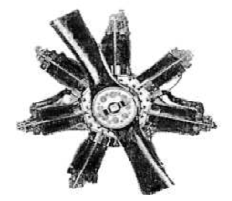

“ABC Wasp”
-Between 1914 and 1918 British light aircraft used the "Gnat" a lot, the ones between 35 and 45 hp according to the version. They had two horizontally opposed cylinders, copper fins and also an intake valve and two exhaust valves. The engine of the image is the 40 hp one.
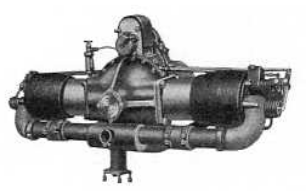
“ABC Gnat”
The 35 hp version with 3500 rpm and basic ignition was made with direct or geared output.

"ABC Carslogotype"
-There was another version, which was a Short-life one: 2 hours and disposable. The Gnat II gave 45 hp.
-During the period from 1918 to 1924 when the military contracts were canceled, ABC focused on the production of motorcycle and automobile engines, as "All British Cars".
-In the beginning of the 1920's these engines were adapted for aeronautical use.
This is the case of the Wren aircraft that used a small 2 cylinder motorcycle engine of 400 cc that only gave 7-8 hp. This engine was known as "Bradshaw".
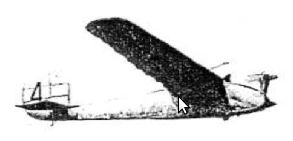
"Wren aircraft"
They also used adapted ABC car engines that we can see below.
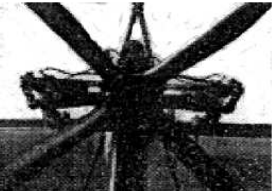
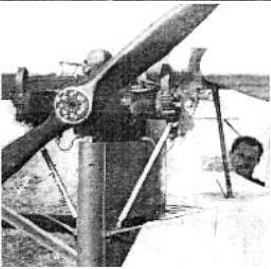
"Adapted ABC car engines"
-The ABC "Scorpion" came around 1924, being bi-cylindrical, horizontally opposed with dual ignition.
-The Mk.I gave 24 hp at 2500 rpm. The 30 hp version is showed in the image below.

“ABC Scorpion, 24 hp”
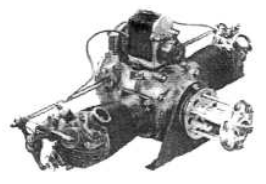
“ABC Scorpion, de 30 hp”
-The improved "Scorpion" with 34 hp at 2300 rpm was the MkII.
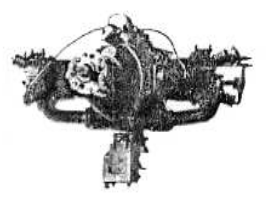
“ABC Scorpion II”
-Around 1926 they manufactured the "Hornet", a 4-cylinder variant of the 2-cylinder "Scorpion". It gave a power between 75 and 81 hp.
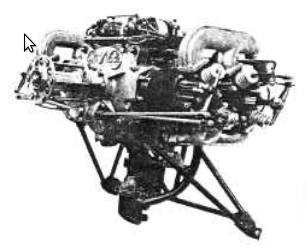
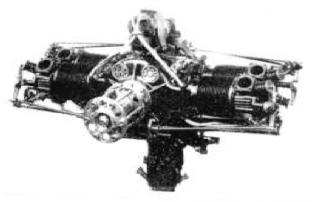
"Two ABC Hornets"
-The cylinders were horizontally opposed, two by two and had a displacement of 3990 cc, giving 75 hp at 1875 rpm and 81 hp at 2075 rpm.
-During WWI the "Dragonfly"was massively built by various companies in the UK.
-With 9 cylinders in a single star they gave 320/350 hp, according to the different models that were made of this engine.
-It had three valves per head, dual ignition per cylinder with two independent magnetos, each of them feeding one of the cylinder's two spark plugs.
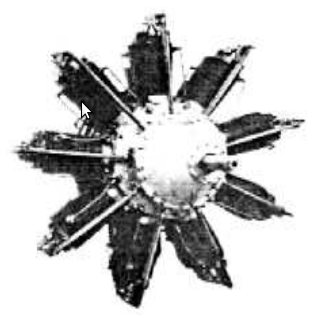
“ABC Dragonfly”
-They had two carburetors and a direct propeller drive.
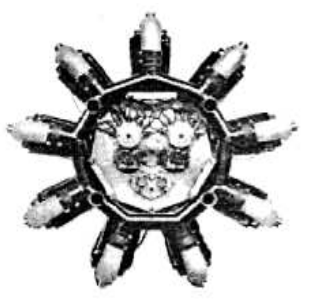
"ABC Dragonfly, rear view"
-As for auxiliary groups, already in the second world war, ABC produced on-board auxiliary engines and continued producing them after the war.
-For example the 15 hp was a four-cylinder V engine with a 28V generator that gave 6kW.
The 15 hp one had transmissions for driving a dynamo, a hydraulic pump, and two compressors by means of gear boxes.
-Below you find the information from the appendixes that came with the 2008/09 edition of the book.
From the appendixes 6 and 7: We received a surprising ABC engine, designed by ABC but built by the Armstrong Whitworth factory.
-It is a V8 of which each cylinder has a bore of 5 inches and a stroke of 4'25 inches. It is mentioned in the main text before.
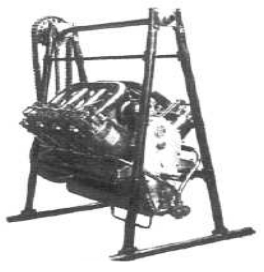
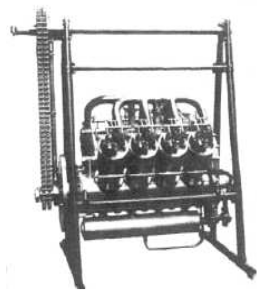
"Two views of the ABC V8"
-Above we showed two pictures of the engine in a mounting structure, due to the transmission with the installation of the propeller.
-Now we have a diagram of an ABC motorcycle engine adapted for its use in light aviation. It was showed in the year 1923 and has 2 horizontal opposed cylinders with 400cc of displacement.
-It was presented at the Duke and Sutherland award and was limited to 750 cc.
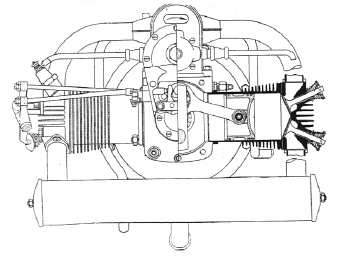
"ABC 400 cc"
-Now we show a complete auxiliary engine, designed by L.Ridley and built by ABC. The engine has two opposed cylinders and 4 hp of power.
-It has a handle for manual starting and it includes compressor, fuel pump, oil pump, and drainage pump. Besides it has a generator that is visible in the first picture and not in the second one.

"ABC 4HP APU both sides"
-An ABC two-cylinder engine, possibly used in cars. It looks like the one we mentioned earlier in the main text as an APU.

"ABC dual cylinder" (PiP)
We also found in Flickr a new ABC two stroke four-cylinder engine. Actually it is an assembly of four single-cylinders. We see the magneto on the right, driven by a chain.

"ABC four cylinder" (PiP=fk)
-To continue with this brand, we located a complete APU, together with the manual start handle.
-This engine gives 4 hp and stands out as "Generating and Pumping Set" as it is an APU of various types. It can drive a variety of accessories through gear boxes independently or together.
-These are:
- Dynamo with a 12V output at 50A.
- Fuel pump. To transfer from supplementary tanks to the main ones with a capacity of 2250 gallons per hour. NOTE 1.
- Oil pump to transfer from the emergency tanks to the engine's main tanks. Capacity of 30 gallons per hour.
- Bilge pump to pump any liquid from the hull or the floats of a seaplane. (mainly water). Capacity of 2500 gallons per hour.
- Compressor capable of charging containers until 400 cubic inches at a pressure of 200 psi in 10 minutes. All together it weighed 102 pounds.
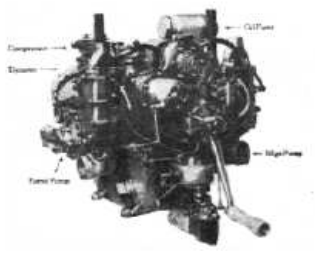
"ABC 4 HP APU"
-Clarification at NOTE 1. For not skilled readers.
In Anglo-Saxon and American measures, we clarify that the English gallons are different from the Americans in its equivalence to the metric liter as follows:
-An English Imperial gallon equals 4'530 liters, while the US.Gallon is only 3'785 liters.
-This has to be taken seriously at the time of refueling an American or a British aircraft.

"Advertisement of the Dragonfly"
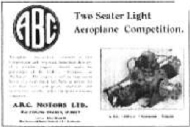
"Advertisement of the Scorpion"
-And a another 6 hp engine from the year 1915, used as APU.
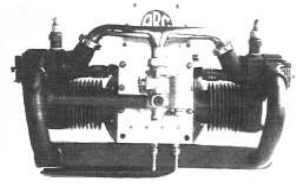
"ABC 6HP APU"
-The 34 hp Scorpion engine installed on a glider of the flying wing type in a rather high position.

"ABC Scorpion as a driver"
Appendix 10: In Wiki we found a photograph of the ABC Mosquito engine that was only mentioned in the main text without picture.
-It is a 6-cylinder radial that was designed by the British engineer Granville Bradshaw (see Bradshaw). It gave 120 hp of power.
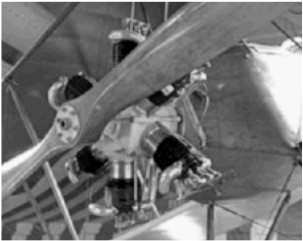
“ABC Mosquito engine” (PiP)
-This engine for light aircraft was made in 1916. It used "Gnat" cylinders, but did not get the expected success. In those days, the gasoline that was used, only had a self-igintion resistance of OCT 45/50.
We localized new material for the “Dragonfly”.

"Dragonfly, detailed rear view"
-Behind the intake manifold in the center of the crankcase there are the accessories, like the two magnetos.
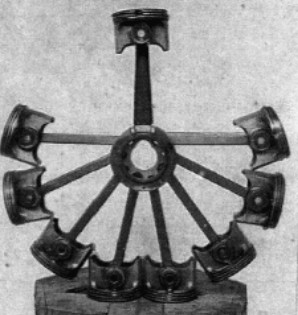
"Connecting rod system and pistons"

"Cylinder: observe the spring type"
From Appendix 10: Here we show the two-cylinder engine mentioned the main text, with the central-block cover removed.
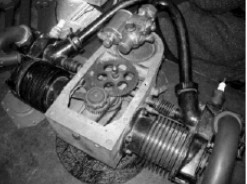
"ABC 6-hp auxiliary interior details"
Engines of ABC
Model: 40 HP
Arquitecture: In-line
Cooling: Liquid
Total Displacement:
Bore / Stroke:
Power: 40 HP @ rpm
Weight:
-The first aeroengine from the ABC brand, derived from those built by ABEC.
Model: 8 HP
Arquitecture: 2-cylinder Horizontally opposed
Cooling:
Total Displacement: 400 cc
Bore / Stroke:
Power: 8 HP @ rpm
Weight:
A small motorcycle engine, known as "Bradshaw".
Model: ABC auxiliar de 6 HP
Arquitecture: 2-cylinder Horizontally opposed
Cooling:
Total Displacement:
Bore / Stroke:
Power: 6 HP @ rpm
Weight:
-An engine from the year 1915, used as APU.

"ABC 6 HP auxiliar"
Model: ABC V8
Arquitecture: 8-cylinder V-Engine
Cooling:
Total Displacement:
Bore / Stroke: 5 x 4,25 inch
Power: @ rpm
Weight:

"ABC V8"
Model: APU 4hp
Arquitecture: In-line
Cooling:
Total Displacement:
Bore / Stroke:
Power: @ rpm
Weight:
This engine gives 4 HP and stands out as "Generating and Pumping Set" as it is an APU of various types. It can drive a variety of accesories through gear boxes independently or together.
These are:
- Dynamo with a 12V output at 50A.
- Fuel pump. To transfer from supplementary tanks to the main ones with a capacity of 2250 gallons per hour. NOTE 1.
- Oil pump to transfer from the emergency tanks to the engine's main tanks. Capacity of 30 gallons per hour.
- Bilge pump to pump any liquid from the hull or the floats of a seaplane. (mainly water). Capacity of 2500 gallons per hour.
- Compressor capable of charging containers until 400 cubic inches at a pressure of 200 psi in 10 minutes. All together it weighed 102 pounds.

"ABC APU 4 HP"
Model: Bicilindrico de ABC 1
Arquitecture: 2-cylinder Horizontally opposed
Cooling:
Total Displacement:
Bore / Stroke:
Power: @ rpm
Weight:
-An ABC two-cylinder engine, possibly used in cars. It looks like the one we mentioned earlier in the main text as an APU.

"ABC twincylinder" (PeT)
Model: Cuatro cilindros
Arquitecture: 4-cylinder In-line
Cooling:
Total Displacement:
Bore / Stroke:
Power: @ rpm
Weight:
Two-stroke engine. Actually it is an assembly of four monocylinders.

"ABC four cylinders" (PeT)
Model: Dragonfly
Arquitecture: 9-cylinder Radial
Cooling: Liquid
Total Displacement:
Bore / Stroke:
Power: 320 HP @ rpm
Weight:
It had three valves per head, dual ignition for each cylinder with two independent magnetos, each of them feeding one of the cylinder's two spark plugs. They had two carburetors and a direct propeller drive.

"ABC Dragonfly"
Model: Gadfly
Arquitecture:
Cooling:
Total Displacement:
Bore / Stroke:
Power: @ rpm
Weight:
-At the moment of writing we do not have more details of the "Gadfly".
Model: Gnat
Arquitecture: 2-cylinder Horizontally opposed
Cooling:
Total Displacement:
Bore / Stroke:
Power: 35 - 45 HP @ 1800 rpm
Weight:
Between 1914 and 1918. They had cylinders with copper fins and also one intake valve and two exhaust valves.
The 35 hp version that gave its power at 3500 rpm and basic ignition was made with direct or geared output.
There was another version, which was a "Short-life" engine: 2 hours and disposable. The Gnat II gave 45 hp.

"ABC Gnat"
Model: Hornet
Arquitecture: 4-cylinder Horizontally opposed
Cooling:
Total Displacement: 3990 cc
Bore / Stroke:
Power: 75 / 81 HP @ 1875 / 2075 rpm
Weight:
Around 1926

"Two ABC Hornet"
Model: Mosquito
Arquitecture: 6-cylinder Radial
Cooling: Air
Total Displacement:
Bore / Stroke:
Power: 120 HP
Weight:
Model: Scorpion
Arquitecture: 2-cylinder Horizontally opposed
Cooling:
Total Displacement:
Bore / Stroke:
Power: 24 / 30 HP @ 2500 / 2300 rpm
Weight:
The ABC "Scorpion" had dual ignition.

"ABC Scorpion, 30 HP"
Model: V8 100 HP
Arquitecture: 8-cylinder V-Engine
Cooling:
Total Displacement:
Bore / Stroke:
Power: @ rpm
Weight:
This engine was presented in 1912.
Model: Wasp
Arquitecture: 7-cylinder Radial
Cooling:
Total Displacement:
Bore / Stroke:
Power: 170 / 200 HP
Weight:
Emphasizing that it had one intake valve and two exhaust valves per cylinder.

"ABC Wasp fig.2"


